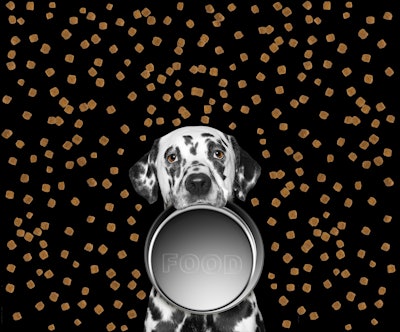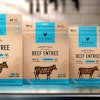
“You may agree new product introductions are the lifeblood and engine powering growth of most CPG food, beverage and lifestyle brands,” reads the opening sentence of the latest blog post from Emergent, an agency focused on food and other consumer product goods (CPG) brands, including some pet food ones. And indeed, new product launches have long been the lifeblood of our dynamic industry.
Yet, new pet food product innovation and development took a hit from the pandemic and its accompanying supply chain and economic disruptions, and that downturn has continued with ongoing inflation causing many consumers, including pet owners, to be more cautious in their purchasing behavior.
In January 2024, data on the U.S. market indicated a slight uptick in new pet product launches, and introductions during the year at industry trade shows like Global Pet Expo and Superzoo hinted that this area of the industry may be recovering. Even if that’s the case, it’s still a risky(ier) environment, so following some tips and best practices from Emergent and other market experts may be wise.
New pet product launches down, but value is way up
First, let’s look at the current state of pet food product development on the market. At Global Pet Expo (GPE) in March 2024, NielsenIQ (NIQ) reported a very small rise in pet care product launches in January after two years of decline; and perhaps more importantly, new products were worth much more in retail dollars. A presentation by Sam Smith, associate client director with NIQ, showed that while the overall number of new pet products has declined over the past few years, their value is up.
Looking at all of pet care (not just pet food), the number of UPCs (essentially product codes) launched in 2020 totaled 33,300 and had a value of US$38,600. In 2023, the number was down more than half, to 14,400, yet the dollar value was four times as great, at US$128,200.
Why the reversal in metrics? The pandemic and its effects may have led manufacturers to be more focused and strategic with their innovation efforts. “New product development may have become more precise and accurate by launching fewer, but better-targeted, products into the market,” wrote my colleague Tim Wall, in reference to the NIQ data and after talking with Smith. “Instead of throwing new pet foods against the wall to see what sticks, innovators are tossing darts at specific market niches.”
Smith stressed that this is a great time for innovation, particularly for pet food. In 2023, pet foods accounted for only 28% of all new pet product launches yet 63% of the dollars associated with those products, he said.
During GPE, my colleagues and I talked with pet food manufacturers who are quickly ramping up their product development and launches back toward previous levels. For example, Dave McLain, CEO of co-packer/private label manufacturer Alphia, said new product launches had ground to a halt during 2022 and 2023; in the last quarter of 2022, his company had zero new product development projects. Yet by the end first quarter of 2024, they had 100 projects in the pipeline.
Likewise, during Superzoo 2024 in August, my colleague Lisa Cleaver reported on numerous new pet food product launches and trends. In addition, we’re all frequently covering launches happening around the world, and our Pet Food Product Database is updated regularly with new products hitting the market.
Pet food product launches worldwide
Kate Vlietstra, director of food and drink for Mintel, shared a global view of new pet food products in August in Pets International magazine. Like NIQ, Mintel’s data shows a decline in launches — in their case, starting even before the pandemic. But Vlietstra seemed to be tracking truly new products vs. more iterative ones, such as new flavors and packaging. Under that distinction, introductions of novel products dropped to about a third of all pet food launches in 2023, down from more than half in 2014.
On the flip side, new varieties/flavors accounted for about 40% of so-called new pet food products in 2023, up from about 25% in 2014, while products with new packaging increased slightly during the same timeframe, from 13% to 18%. There are regional exceptions, such as with Asia Pacific, which has seen a flurry of new pet food product launches (the novel kind), even during the pandemic.
To truly innovate in pet food, Vlietstra recommending looking to three areas for inspiration: baby food, sustainable options (just be sure to justify them in the wake of consumers’ financial concerns) and digestive health, which pet owners continue to prioritize.
7 tips from the new product launch ‘hall of fame’
Emergent has also offered tips, including what it calls its “New Product Launch Practices Hall of Fame,” to decrease the inherent risk in product introductions.
- Understand purchase decision science and the rule of emotion. Consumers, being human, are emotional creatures; our emotions usually rule our decisions much more so than rational thought. “Let emotion be your guide rather than specsmanship,” Emergent says.
- Know that the consumer is always the hero. “Brands notoriously default to talking about themselves and product features to the detriment of consumer engagement,” the Emergent blog post reads. “Every consumer wakes up every day believing they are the hero of their life journey. Your storytelling should focus on them, their lifestyle wants, needs and desires.”
- Identify and remove any lingering sense of risk or uncertainty. It’s in humans’ makeup to avoid disappointment or risk, so if consumers have any uncertainty about a potential product purchase, they’ll likely walk away. Emergent advises that outside expert, credible voices can help affirm what you want consumers to believe, and court their trust.
- Don’t forget the role of higher purpose, deeper meaning and values. Speaking of trust, the best way to earn it from consumers, Emergent says, is to understand and communicate your brand’s “why.” “Consumers care more about why you do what you do than either what or how.”
- Focus on relevance over awareness. While “chasing awareness has been a dominant feature of CPG marketing for decades,” it can be expensive. What you really should focus on is consumer engagement “founded on emotional connection feeding brand evangelism,” the blog post reads.
- Be authentic with your core message and story packaging, yet … Authenticity definitely matters, but your brand story should aim for differentiation and “new category creation,” according to Emergent, and that means how you package and present the story is essential. “Always look at this in the context of solutions to problems consumers are trying to answer that they can only get from you. It’s always about them and their priorities,” they say.
- Be wary of launching and leaving. It’s common for product launches to include heavy outreach and promotion, then “go dark” after three months. “However, your product likely hasn’t as yet reached habit status, so sustaining levels of investment matters as you move to remind consumers why they made the right decision in the first place,” Emergent says.


















